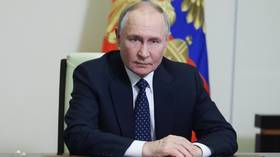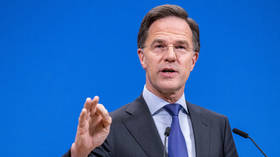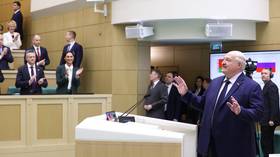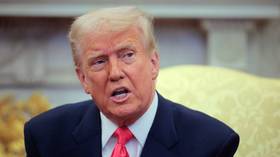U.S. pulls the plug on the world
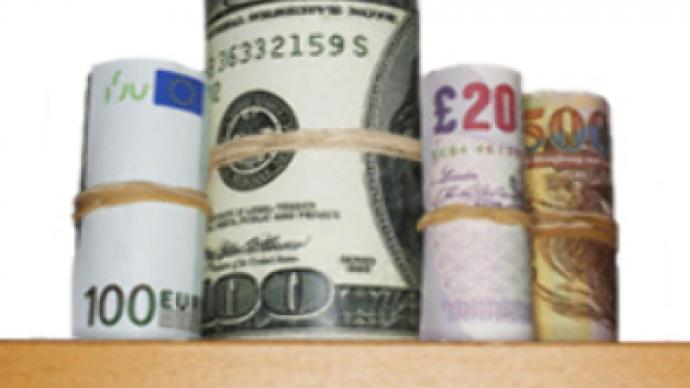
The U.S. administration has prompted a huge surge in the U.S. dollar, which may help refinance its financial sector. The cost is a currency whirlwind that threatens the collapse not just of banks and companies but entire countries.
In the past week the financial crisis, which began in banking and spread to stocks, has careered into the currency markets. The U.S. actively decided back in September 2008 to shut down the investment banks that lend to the biggest professional investors. This has caused those investors to sell anything and everything and to settle their trades.
The result was a whirlwind of liquidation. Korean won, Turkish lira, Brazilian real, British pounds and commodities from oil and metals, all were sucked into the downdraft.
Like a speeding truck heading home, dollar investors left a vacuum in their wake, a vortex of dust, where there had been steadily growing emerging market economies.
And you thought the U.S. authorities were doing their best to prop up asset prices? As the economic lights go out and the U.S. administration fumbles in the dark, maybe it's accidentally cut off the hand that feeds it.
Or has it deliberately prompted a shakeout of asset values and a flight to the dollar? On October 3 the $US 700 billion bailout of banks' bad bets was signed into law, after U.S. Treasury Secretary Henry Paulson assured U.S. Congress it was the only way to avoid financial Armageddon. The stated aim was to support asset prices.
But on September 22, with less publicity, Morgan Stanley and Goldman Sachs gave up their investment bank status, which had allowed them to borrow and lend much more than traditional banking companies. That was just seven days after another investment bank, Lehman Brothers, filed for bankruptcy protection.
These prime brokers, or investment banks, provided the loans that allowed America's professional investors to hunt worldwide in search of ever-bigger game. While U.S. investors earned profits, foreign countries benefited from U.S. investment in their bank, retail and property sectors.
All this dates back to September 2004, when the U.S. Securities and Exchange Commission gave in to pleading from the big five investment banks, who wanted to borrow more heavily against reserves that served to cushion against losses. This allowed them to raise their leverage up to 20, 30 or 40 times, in other words, to borrow $US 30 against every dollar of assets – and lend it on.
They certainly lent it! For mortgage-backed securities, collateralised debt obligations, credit default swaps and dangerous stuff with even safer sounding names.
Read more here.
The banks were Merrill Lynch and Bear Stearns along with Morgan Stanley, Lehman Brothers and Goldman Sachs headed at the time by Henry Paulson.
Treasury Secretary Paulson knows very well who lends to the hedge funds, how shutting down the prime broker system would force them to liquidate their trading strategies and cause a broad sell-off of all kinds of assets.
But what was he, along with the administration, trying to achieve? As professional investors dump foreign currencies and pile the dollars into that homeward bound truck, they're pushing up the U.S. currency.
The U.S. needs its currency to be strong. The U.S. is a debtor nation, spending more than it earns, dependent on foreign loans. Foreigners like the Chinese are financing the bailout of U.S. banks.
If the dollar were to crash in this environment the U.S., reliant as it is on borrowing, would struggle to raise the debt funding it needs to buy its way out of this crisis.
You would expect the dollar to fall as one state after another tips into recession and for gold to rise in times of uncertainty. Instead the reverse is happening.
Gold was approaching $US 700 in the last week of October, down from about $US 1200 just months before. It's a big leap to suggest the U.S. may be shorting gold as a way of supporting the dollar, but causing distressed hedge funds to sell gold amounts to the same thing.
There are other arguments for the rampant dollar. Some people argue that the U.S. entered this financial crisis earlier than other countries, that its housing market has been falling since 2006, and that the U.S. will recover before other countries. Traders may be anticipating interest rate cuts in the UK and Eurozone, while in the U.S. rates have less far to fall.
Companies are certainly buying dollars in order to pay off their debts. However, none of this explains the role of the U.S. administration in driving down asset prices.
I have argued before that governments should focus on supporting the real economy, on saving jobs and less on bailing out the banks. It is certainly not the job of governments to support asset prices at a particular level – and certainly not to spend $US 700 billion buying them off their banking chums.
Maybe Paulson's seen the light but, in that case, may the U.S. taxpayers have their $US 700 billion back please?
Mark Gay, RT



